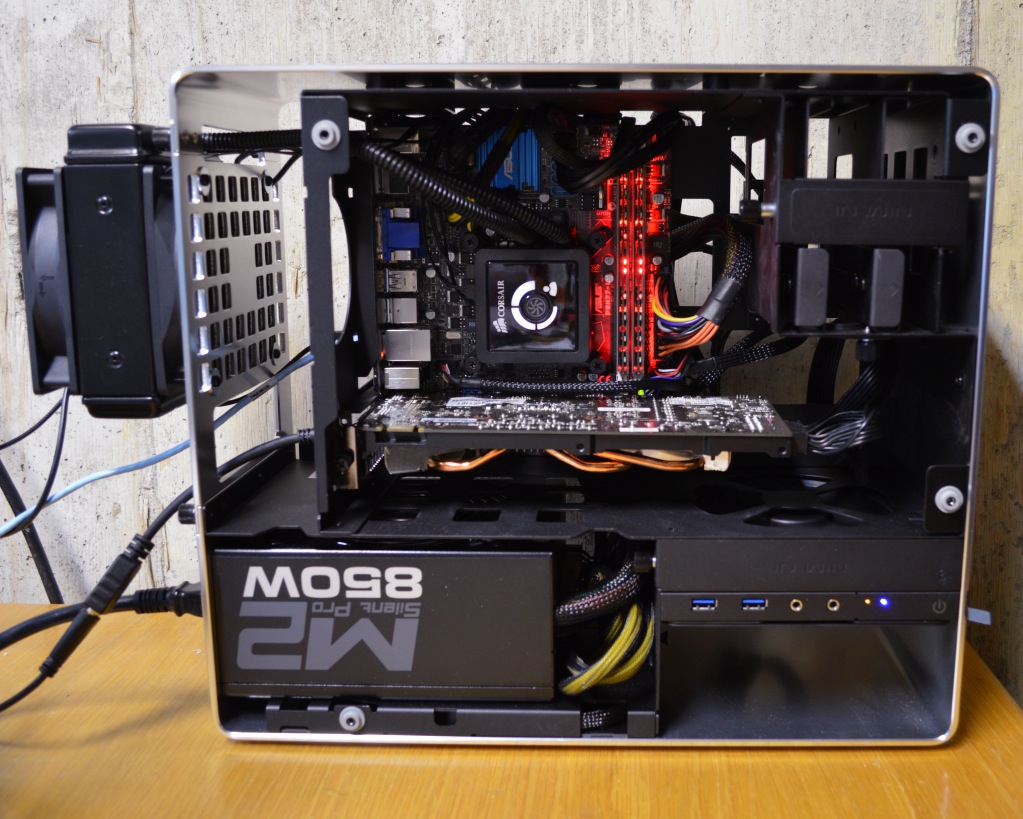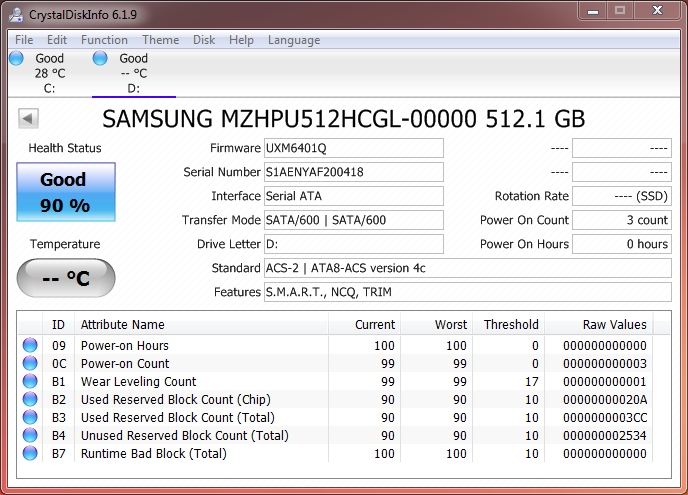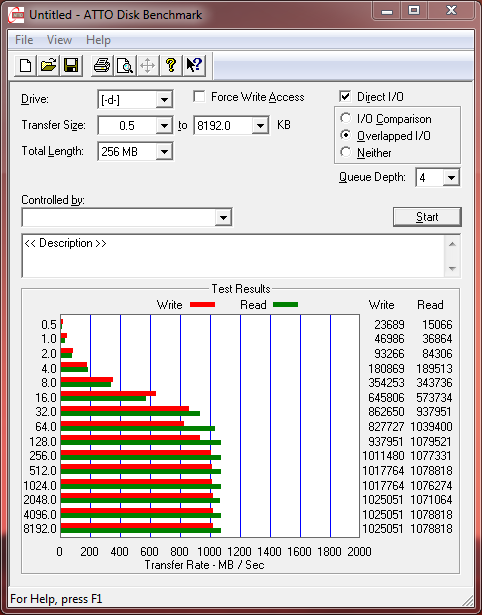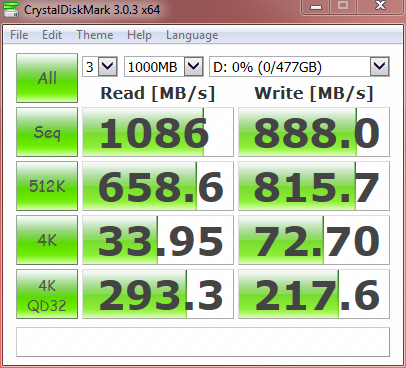TECHNOLOGY X TESTING PROTOCOL
At Technology X, we test our SSD’s slightly different depending upon the drive’s marketed purpose, that of a consumer or an enterprise focused SSD. For a consumer SSD, our goal is to test in a system that has been optimized with our SSD Optimization Guide, however, CPU C State alteration may or may not have occurred depending on the motherboard and BIOS configurations. Benchmarks for our consumer tests are that of fresh drives, so that we can verify that the manufacturer’s specifications match the SSD. Additionally, we also try to include links to the benchmarks used in our report so that you as the reader can replicate our tests to confirm that your SSD is top-notch.
SYSTEM COMPONENTS
This Test Bench build was the result of some great relationships and purchase; our appreciation goes to the below mentioned manufacturers for their support in our project. All of the components we use for testing and evaluation can be easily purchased at a relatively affordable price. The links provided below can assist in pricing, as well as availability for those of you who may find interest in our equipment.
| PC CHASSIS: | InWin 901 Mini-ITX Chassis |
| MOTHERBOARD: | ASUS P8H77-I Mini-ITX |
| CPU: | Intel i7 2600 CPU |
| CPU COOLER: | Corsair H80 CPU Cooler |
| POWER SUPPLY: | Cooler Master M2 Silent Pro 850W |
| SYSTEM COOLING: | Corsair Chassis Fan |
| MEMORY: | Crucial Ballistix Tactical Tracer 1600 MHz |
| GRAPHICS CARD: | EVGA NVIDIA GeForce GTX 560 Ti |
BENCHMARK SOFTWARE
The software used for today’s analysis is typical of many of our reviews and consists of ATTO Disk Benchmark, Crystal Disk Info, Crystal DiskMark, AS SSD, and PCMark Vantage. In consumer reports, we prefer to test with easily accessible software that the consumer can obtain, and in many cases, we even provide links. Our selection of software allows each to build on the last and to provide validation to results already obtained.
Crystal Disk Info is a great tool for displaying the characteristics and health of storage devices. It displays everything from temperatures, to the number of hours the device has been powered, and even to the extent of informing you of the firmware of the device.
When taking a look at Crystal Disk Info, we can see that the XP941 features the S.M.A.R.T. attribute, as well as TRIM. It is also good to note that the SSD has only been powered on 3 times, which is typical indicator of a quick validation performed by the manufacturer.
ATTO Disk Benchmark is a relatively easy-to-use benchmark tool, which happens to be the benchmark of choice for many manufacturers. ATTO uses compressible data rather than random data, which results in higher performance and thus, higher benchmark scores. In our testing, we have selected the transfer size to range from 0.5KB to 8192KB, and have set the total length of the test to be 256MB.
How awesome is this to see right off the bat? With write speeds reaching 1025 MB/s and read speeds of up to 1078 MB/s, this drive is incredible!
CRYSTAL DISK BENCHMARK VER. 3.0.3 x64
Crystal Disk Benchmark is straightforward and is used for measuring the speeds at which your SSD reads and writes in both compressible (oFill/1Fill) and incompressible (random) data. Random data is more consistent with everyday use of a computer, such as transferring videos, pictures and music. We run the benchmark twice, using oFill data first, and then proceeding to test with random data. Since results typically return with nearly identical scores, we only include the results for random data samples.
As we switch over to using incompressible data we see a slight performance decrease with our write speeds, reaching 888 MB/s. This is expected considering the change is data usage in this benchmark, however our read speeds actually increase to 1086 Mb/s.
Review Overview
SSD Build
Features
Performance
Pricing
Availability
Unbelievable Performance!
The Samsung XP941 M.2 PCIe solid state drive is a phenomenal drive that flaunts its 1GB/s performance and is worth every dollar for your next upgrade, that is if you can find one.
 Technology X Tomorrow's Technology Today!
Technology X Tomorrow's Technology Today!





This drive is sensationally fast! My iMac has a 256GB variation of the XP941.
Hey Les, a quick question: I have my SSD partitioned into one 180GB partition for OS X and 70GB for Win 8.1. I keep the 180GB partition half empty at all times, while the Windows partition is 70% full. Is it possible that I reduced the performance of the SSD? I cannot seem to get above 700MB/s reads and 600MB/s writes. I think I remember slightly higher speeds (around +100MB/s reads) when the SSD was one partition only. TRIM is working on both OS X and Windows. I checked.
I read that SSD’s don’t “care” about being partitioned as opposed to hard drives, but I want to hear from the SSD man himself. 😉
Thanks!
Thats a tough one and I wonder if yo partitioned it lower if performance might drop further, similar to lower capacity SSD performance??
The performance shouldnt drop because of the formatting, at least that hasnt occurred in our testing.
What were the original speeds?
I want to say I remember them being approx. 100MB/s faster on reads and maybe 50 on the writes.
Like I said, I’ve been wondering about this partitioning SSDs and the possibility of performance degradation. I read an interesting post from one seemingly knowledgeable person who opined that SSDs do not handle data in a way that would reduce performance as a result of partitions being in place. That would be good news.
Who knows. What I do know is that I’ll wipe out the BootCamp partition in the next few days and we shall see what’s what. I also know that I won’t tolerate any type of significant performance drop on account of Windows being installed natively. I don’t want to be without Windows either, though, so I may just re-install in a virtual machine.
I’ll also do some tests as far as formatting to lower and lower sized partitions, so we can see if the size of the partitions matters. (it does on hard drives)
So you have it in a BootCamp configuration… I ended up getting rid of that, but wish I had same now as i could have tested. I originally had the 256GB MBA drive partitioned evenly for OSX/Win.
Yea, same here, except I gave OS X 180GB and 70GB to Win 8.1 Pro. I imported the BootCamp partition into a virtual machine and wiped it out. (Btw, you can still get the BootCamp partition back by using the utility, can’t you? If you wanted it back, that is)
Read speeds are about the same, but the writes have improved by 40MB/s. My 256GB SSD has 140GB free, so it’s got plenty of room, too. I’m probably going to re-install the BootCamp partition, though. (I love operating systems and tinkering with them. ha ha)
Creative suggestions ! BTW , people are looking for a IRS 941-X , my boss found a blank form here
https://goo.gl/7OefXe